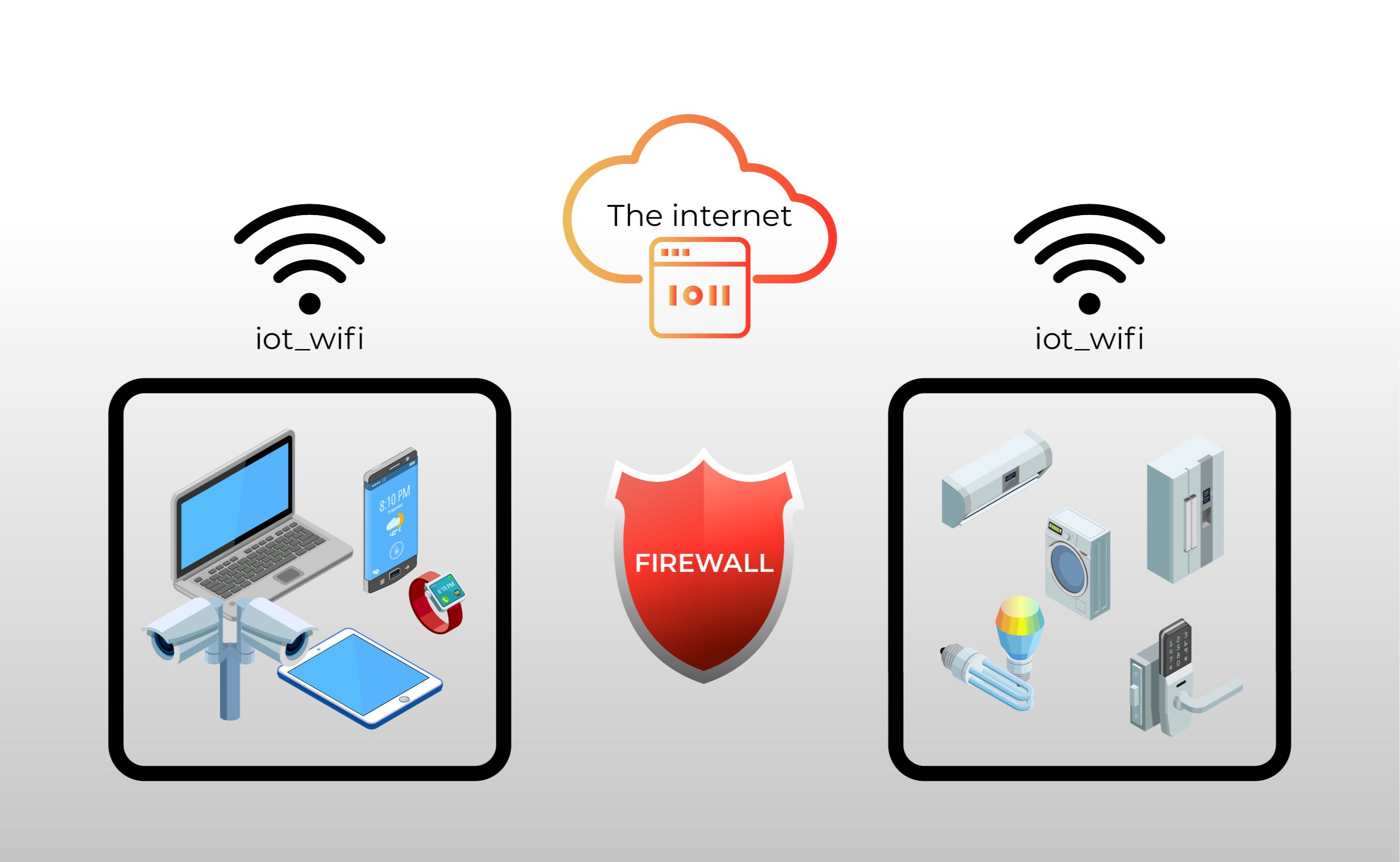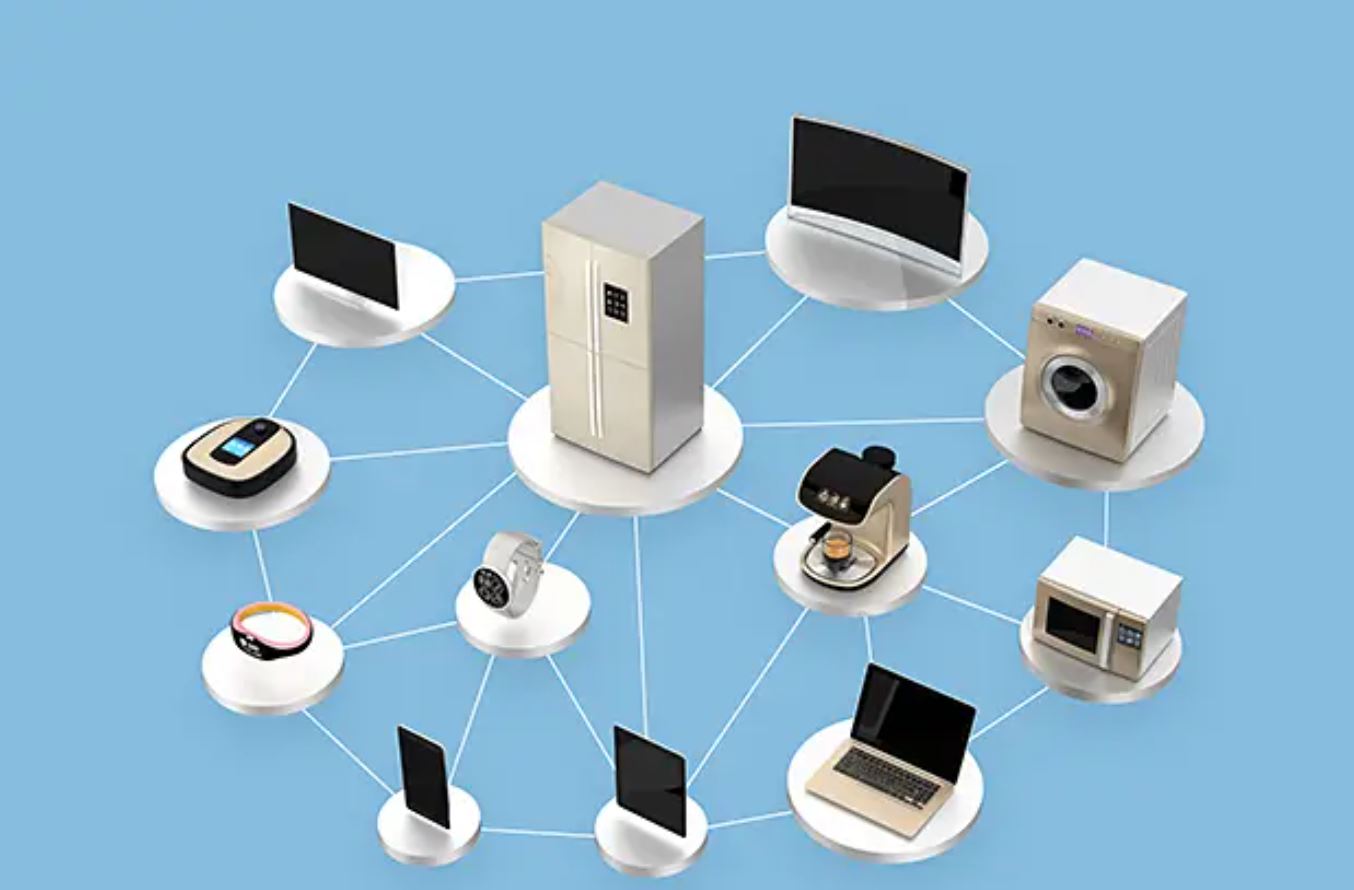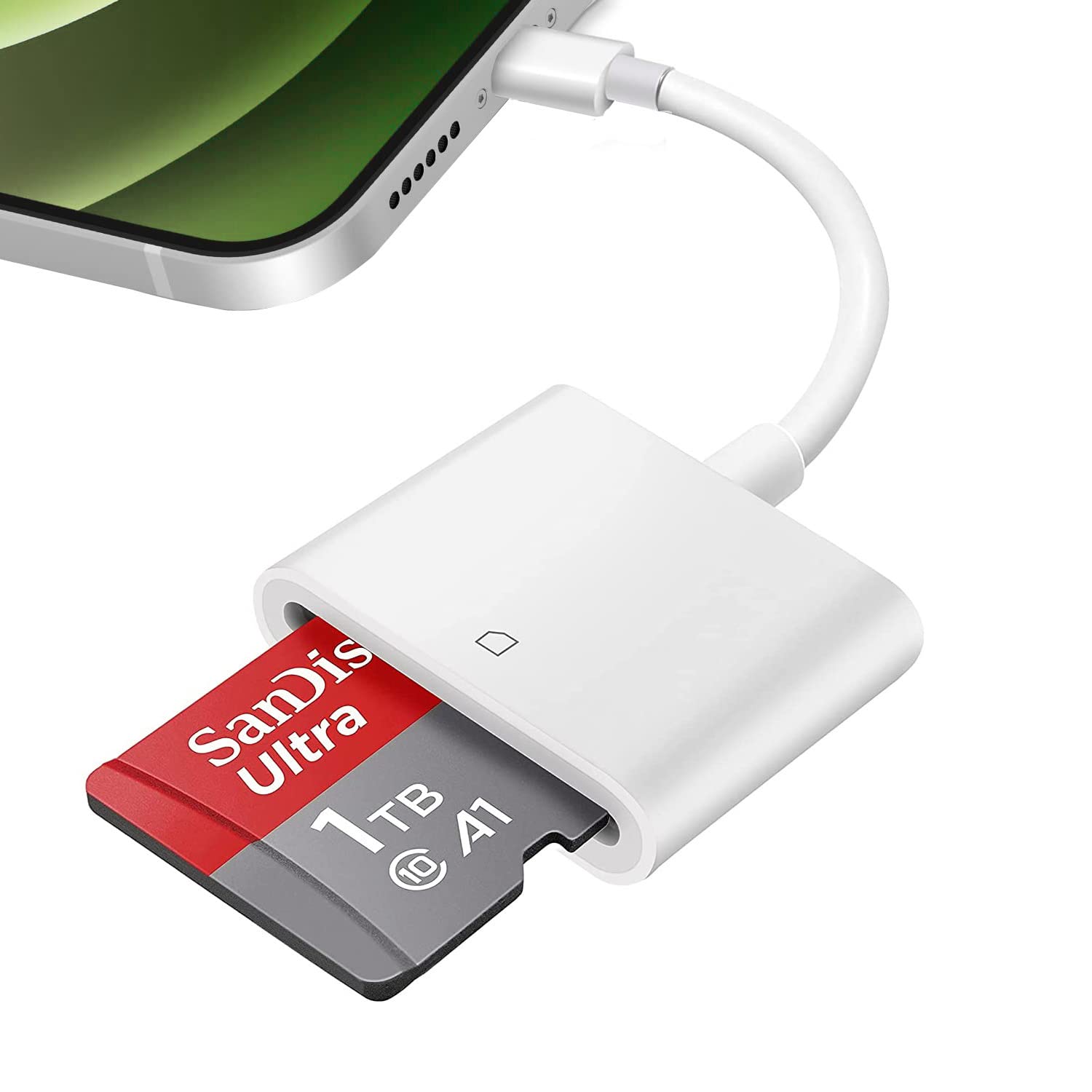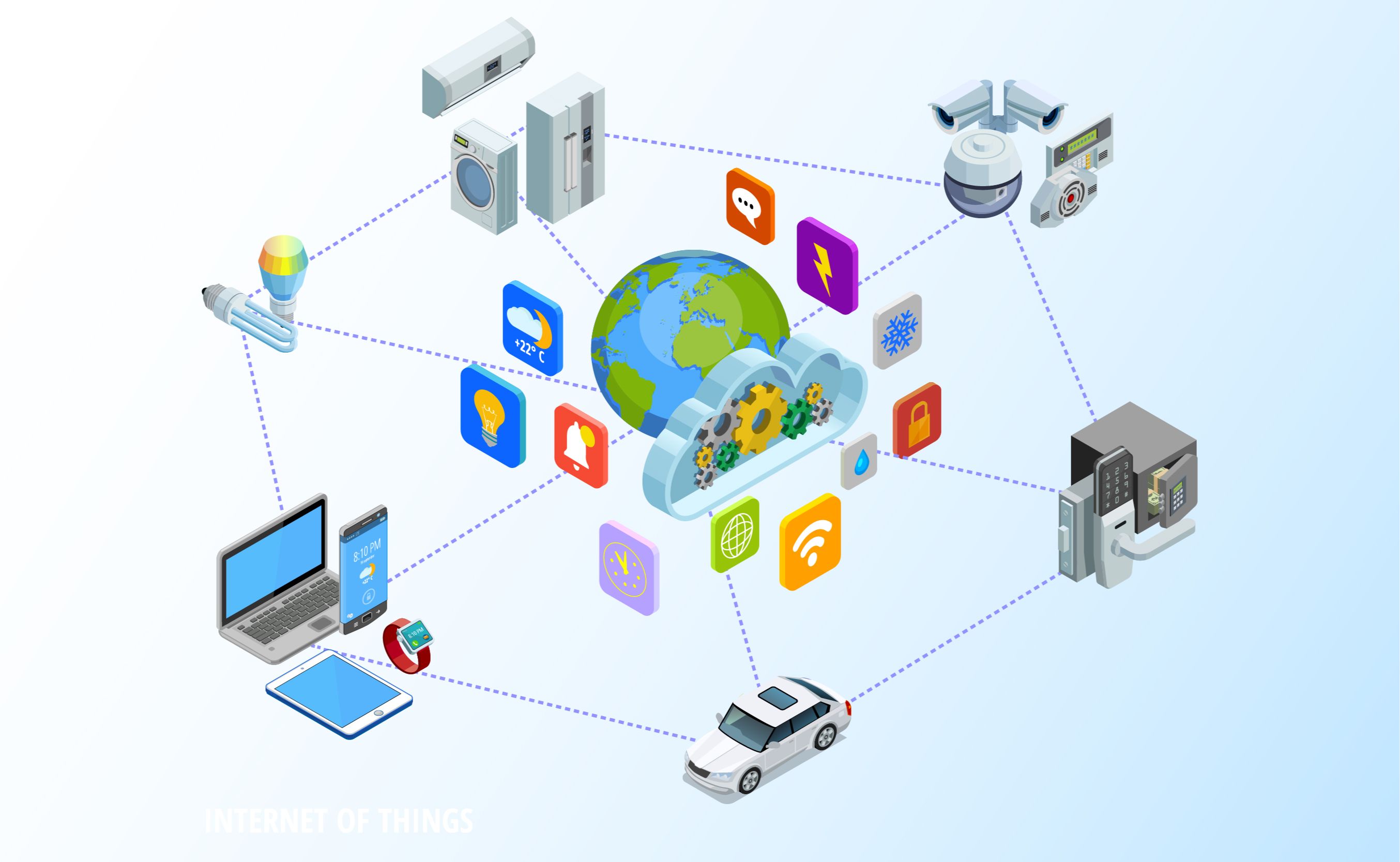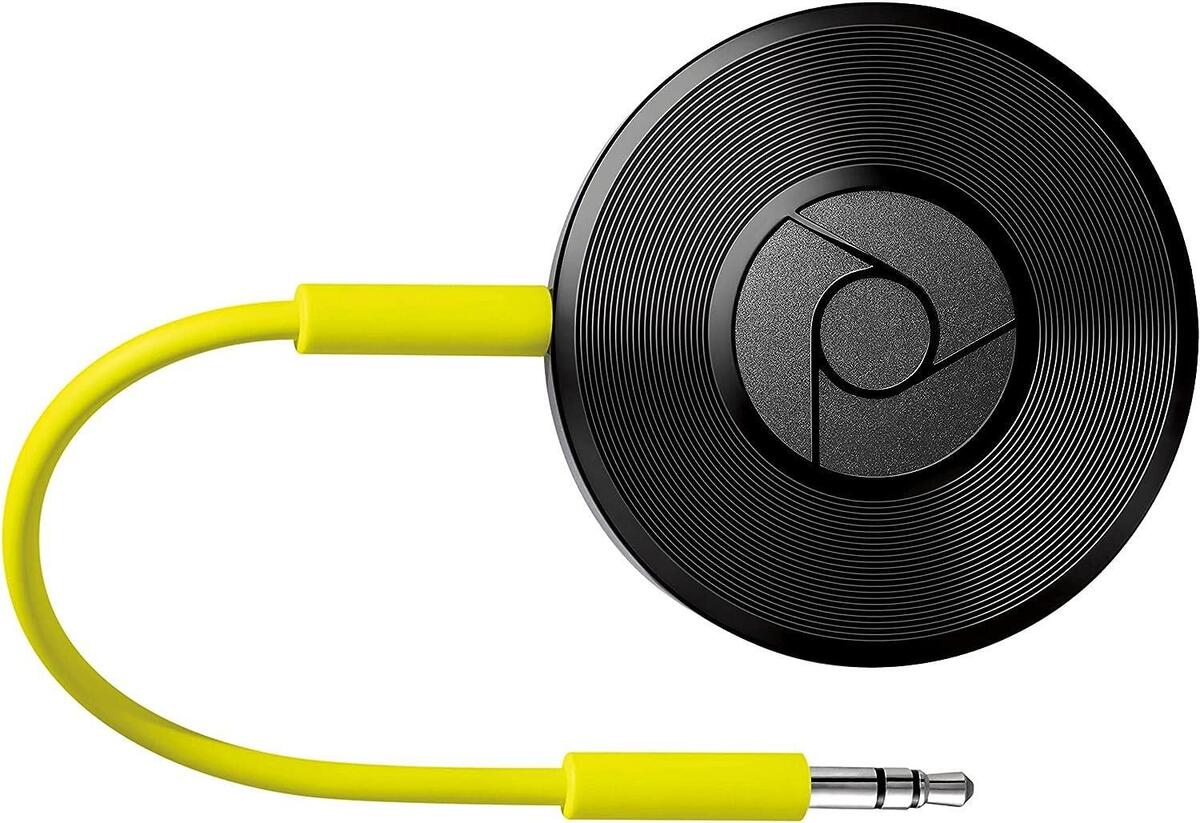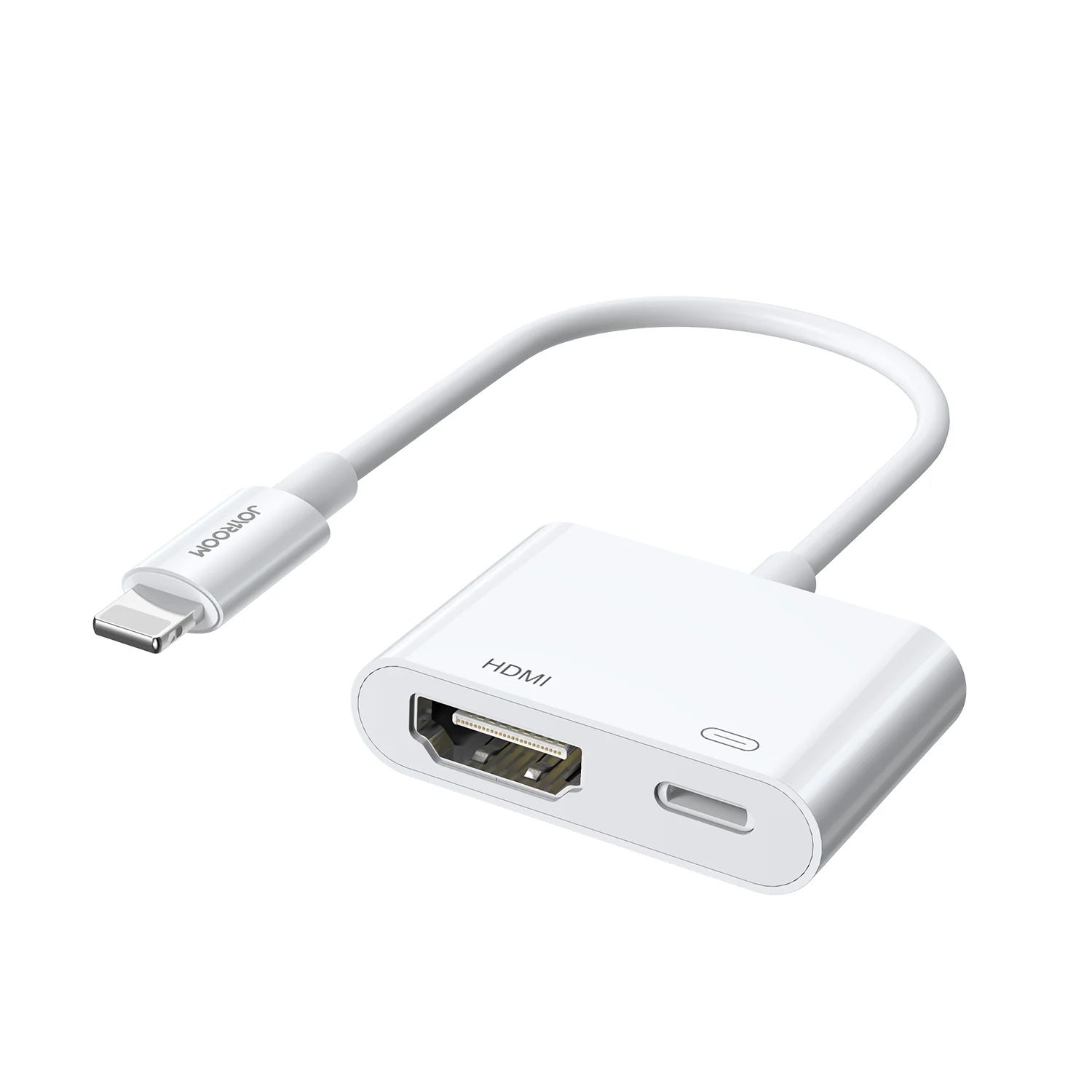Introduction
The world of technology is advancing at an unprecedented pace, and the Internet of Things (IoT) has become a major part of our daily lives. IoT devices are revolutionizing the way we interact with our environment, bringing connectivity and automation to various aspects of our lives. From smart homes to wearable devices, IoT devices are transforming how we live, work, and communicate.
But have you ever wondered how these IoT devices communicate with one another? How do they transmit data seamlessly? The answer lies in the protocols and port numbers they use for communication.
In this article, we will explore the common protocols and port numbers that IoT devices use to communicate. Understanding these protocols and ports is essential for developers, network administrators, and anyone interested in the world of IoT.
We will delve into the technical details of protocols such as HTTP, HTTPS, MQTT, CoAP, UDP, and TCP, and explore the specific port numbers associated with each protocol. By the end of this article, you will have a better understanding of how IoT devices communicate and the importance of these protocols and ports in enabling seamless data transmission.
What are IoT Devices?
The Internet of Things (IoT) consists of a vast network of interconnected devices that can communicate and exchange data with each other. These devices, often referred to as IoT devices, are embedded with sensors, software, and connectivity capabilities that enable them to collect and transmit data over the internet without the need for human intervention.
IoT devices come in various forms and serve a wide range of purposes. They can be as small as a wearable fitness tracker or as large as an industrial sensor deployed in a factory. Some common examples of IoT devices include smart home appliances, fitness and health trackers, environmental sensors, industrial machinery, and autonomous vehicles.
What sets an IoT device apart from a regular device is its ability to connect to the internet and interact with other devices and systems. This connectivity allows IoT devices to gather real-time data, receive commands, and send information to other devices or centralized cloud platforms for processing and analysis.
IoT devices can be categorized into three main types:
- Sensors and Actuators: These devices are responsible for collecting data from the physical environment. Sensors can detect and measure things like temperature, humidity, motion, and light, while actuators enable devices to perform physical actions based on received commands, such as turning on a light or adjusting the thermostat.
- Gateway Devices: Gateway devices act as intermediaries between IoT devices and the cloud. They aggregate data from multiple devices, perform local processing, and transmit the necessary data to the cloud for further analysis and storage.
- Smart Devices: These devices are equipped with advanced processing capabilities and often have a user interface for direct user interaction. Smart devices include smartphones, smart TVs, smart speakers, and wearable devices like smartwatches or fitness trackers, which can connect with other IoT devices and control them.
Overall, IoT devices are at the forefront of the digital revolution, enabling automation, data-driven decision-making, and improved efficiency in various industries and everyday life. Understanding the different types and capabilities of IoT devices is crucial in harnessing the full potential of this rapidly expanding field.
How do IoT Devices Communicate?
IoT devices rely on a variety of communication methods and protocols to transmit data and interact with other devices and systems. The primary means of communication for IoT devices include:
1. Wireless Communication: Many IoT devices use wireless technologies such as Wi-Fi, Bluetooth, Zigbee, or cellular networks to establish connections and exchange data. These wireless protocols provide flexibility and allow devices to communicate over short or long distances without the need for physical connections.
2. Internet Protocol (IP) Communication: Most IoT devices are IP-enabled, meaning they use the standard internet protocol suite to communicate with other devices and systems over the internet. IP communication enables devices to have unique IP addresses and connect seamlessly to other devices and cloud platforms.
3. Cloud Connectivity: IoT devices often communicate with cloud-based platforms that provide centralized data storage, processing, and analysis. These platforms act as intermediaries for device-to-device and device-to-application communication. They enable large-scale data aggregation, real-time analytics, and remote control of IoT devices.
4. Local Network Protocols: In some cases, IoT devices communicate directly with other devices on a local network without relying on the internet or cloud platforms. Local network protocols, such as the Message Queuing Telemetry Transport (MQTT) or Constrained Application Protocol (CoAP), facilitate communication within local networks.
5. Application Programming Interfaces (APIs): APIs play a crucial role in enabling communication between IoT devices and applications or services. APIs define a set of rules and protocols that allow devices and applications to interact and exchange data. They enable seamless integration of IoT devices with various software applications and services.
Overall, the communication methods employed by IoT devices are diverse and dependent on factors such as the device’s purpose, connectivity requirements, and the desired level of interoperability. Understanding how IoT devices communicate is vital for designing efficient and secure IoT solutions and ensuring reliable data transmission and interaction between devices and systems.
Common IoT Protocols and Port Numbers
IoT devices use various protocols and port numbers to establish communication channels and transmit data. These protocols define the rules and standards for data exchange, while port numbers ensure that the data reaches the correct applications or services. Here are some of the most commonly used IoT protocols and their associated port numbers:
1. HTTP (Port 80): Hypertext Transfer Protocol (HTTP) is a widely adopted protocol for communication between web browsers and web servers. IoT devices often use HTTP to interact with web-based applications or services. Port 80 is the default port for HTTP communication.
2. HTTPS (Port 443): HTTPS is the secure version of HTTP that encrypts data transmission between devices and web servers, ensuring greater security and privacy. IoT devices that require secure communication, such as those involved in financial transactions or personal data exchange, commonly use HTTPS. Port 443 is the default port for HTTPS communication.
3. MQTT (Port 1883/8883): Message Queuing Telemetry Transport (MQTT) is a lightweight messaging protocol designed for efficient communication between IoT devices and servers. MQTT is widely used in IoT applications that require low bandwidth and battery-friendly operation. Port 1883 is the default port for unencrypted MQTT communication, while port 8883 is used for encrypted MQTT (MQTT over TLS).
4. CoAP (Port 5683/5684): The Constrained Application Protocol (CoAP) is a lightweight protocol designed for resource-constrained devices in IoT applications. CoAP enables communication between devices using UDP or DTLS (Datagram Transport Layer Security). Port 5683 is the default port for unencrypted CoAP communication, while port 5684 is used for encrypted CoAP (CoAP over DTLS).
5. UDP (Port 53): User Datagram Protocol (UDP) is a connectionless protocol that allows fast and lightweight communication between devices. UDP is commonly used for real-time applications and services in IoT, such as streaming and voice over IP (VoIP). Port 53 is often used for DNS (Domain Name System) communication, which is essential for translating domain names into IP addresses.
6. TCP (Port 80, 8080, 1883, etc.): Transmission Control Protocol (TCP) is a reliable and connection-oriented protocol that ensures data integrity during transmission. TCP is heavily used in IoT applications where reliable and ordered data delivery is critical, such as firmware updates or large data transfers. Common TCP ports used in IoT include port 80 (HTTP), port 8080 (alternative HTTP), and port 1883 (unencrypted MQTT).
These protocols and port numbers are just a few examples of the many options available for IoT communication. The choice of protocol and port number depends on the specific requirements of the IoT application, including factors such as security, efficiency, and interoperability.
HTTP (Port 80)
HTTP, or Hypertext Transfer Protocol, is one of the foundational protocols of the internet and is widely used for communication between web browsers and web servers. IoT devices often leverage HTTP to interact with web-based applications or services, allowing them to send requests and receive responses containing data.
The default port for HTTP communication is port 80. When an IoT device communicates over HTTP, it establishes a connection with the target server on port 80 to transmit data. This communication can involve various actions, such as retrieving information, submitting forms, or performing other operations supported by the HTTP protocol.
HTTP is a stateless protocol, meaning that each request from an IoT device is evaluated independently by the server. This allows IoT devices to interact with web resources in a transactional manner, fetching data or triggering actions based on the received responses.
IoT applications that utilize HTTP communication over port 80 can include smart home devices, weather stations, or any IoT device that interacts with web-based APIs or services. For example, a weather station IoT device may use HTTP to fetch current weather data from an API hosted on a remote server.
While HTTP is a widely supported and accessible protocol, it is important to consider security implications when transmitting sensitive data. HTTP does not provide encryption by default, which means that data sent over an unsecured connection can potentially be intercepted or manipulated. To address this concern, it is recommended to use HTTPS (HTTP over SSL/TLS) for secure communication, which encrypts the data exchanged between the IoT device and the server.
HTTP, with its default port 80, remains a fundamental protocol in the realm of IoT communication, enabling seamless interaction between IoT devices and web-based services or applications. Developers and network administrators working on IoT projects should have a thorough understanding of HTTP and its capabilities to design efficient and secure IoT solutions.
HTTPS (Port 443)
HTTPS, or Hypertext Transfer Protocol Secure, is the secure version of HTTP. It adds an extra layer of security to the data transmitted between web browsers and web servers. IoT devices often utilize HTTPS for secure communication with web-based applications or services, ensuring the confidentiality and integrity of the transmitted data.
The default port for HTTPS communication is port 443. When an IoT device communicates over HTTPS, it establishes a secure connection with the target server on port 443. This secure connection is achieved through the use of SSL (Secure Sockets Layer) or its successor, TLS (Transport Layer Security), protocols.
HTTPS encrypts the data exchanged between the IoT device and the server, providing protection against eavesdropping, tampering, and unauthorized access. This is especially important when transmitting sensitive data, such as personal information, financial details, or authentication credentials.
IoT devices that use HTTPS communication over port 443 can include smart locks, surveillance cameras, or any IoT device that requires secure and private communication. For instance, a smart lock IoT device might use HTTPS to securely transmit access credentials from a mobile app to the lock’s server, ensuring that the communication is encrypted and protected from unauthorized access.
Implementing HTTPS in IoT applications requires obtaining and installing an SSL/TLS certificate on the server-side to establish the secure connection. This certificate verifies the authenticity of the server, ensuring that the IoT device is communicating with the intended, trusted endpoint.
While HTTPS provides increased security, it also incurs additional computational overhead due to the encryption and decryption processes. This can have an impact on the performance and resource consumption of IoT devices, especially those with limited computational power or battery life. Therefore, it is essential to consider the trade-offs between security and resource constraints when implementing HTTPS in IoT applications.
Despite the additional complexities, the use of HTTPS with its default port 443 significantly enhances the security of IoT communications and protects sensitive data from being compromised. IoT developers and network administrators should prioritize the implementation of HTTPS in their projects to ensure the privacy and integrity of IoT device communications.
MQTT (Port 1883/8883)
MQTT, or Message Queuing Telemetry Transport, is a lightweight messaging protocol designed for efficient communication between IoT devices and servers. It is commonly used in IoT applications that require low bandwidth consumption and efficient battery usage. MQTT operates on top of TCP/IP and enables devices to send and receive messages in a publish-subscribe pattern.
The default port for unencrypted MQTT communication is port 1883. When an IoT device communicates over MQTT, it establishes a connection with the MQTT broker (server) on port 1883. This connection allows the device to publish messages to specific topics or subscribe to topics to receive messages from other devices or applications.
For secure MQTT communication, MQTT over TLS (Transport Layer Security), also known as MQTT Secure (MQTTS), is used. The default port for encrypted MQTT communication is port 8883. MQTT over TLS ensures that the data transmitted between IoT devices and the broker is encrypted, providing a higher level of security.
MQTT’s lightweight nature and low bandwidth consumption make it ideal for IoT devices with limited resources, such as microcontrollers or sensor nodes. Its publish-subscribe model allows devices to effectively communicate and distribute messages to multiple subscribers in a scalable manner.
MQTT also supports Quality of Service (QoS) levels, which determine the reliability and delivery assurance of messages. QoS levels range from QoS 0 (at most once), which offers best-effort delivery but lacks reliability, to QoS 2 (exactly once), which ensures message delivery with duplication protection but requires more network overhead.
MQTT’s efficiency and flexibility have made it popular for a wide range of IoT applications, including home automation, remote monitoring, and industrial systems. For example, in a smart home scenario, an IoT device like a temperature sensor could use MQTT to publish temperature readings to a broker, and a home automation controller could subscribe to that topic to receive and act upon the temperature data.
When implementing MQTT in IoT applications, it’s important to consider security measures such as authentication and authorization to ensure that only authorized devices can access the broker and publish or subscribe to specific topics. Additionally, configuring proper QoS levels based on the application’s requirements is crucial to ensure reliable and efficient message delivery.
In summary, MQTT with its default ports 1883 and 8883 provides a lightweight and efficient messaging solution for IoT devices, allowing for low-bandwidth communication and scalability. It is widely supported in the IoT ecosystem and is an excellent choice for resource-constrained IoT devices that require reliable and efficient messaging capabilities.
CoAP (Port 5683/5684)
CoAP, or Constrained Application Protocol, is a lightweight protocol designed specifically for resource-constrained IoT devices. CoAP enables these devices to communicate efficiently over constrained networks, such as low-power wireless networks or networks with limited bandwidth. It is an alternative to HTTP for IoT devices that require lightweight and low-overhead communication.
The default port for unencrypted CoAP communication is port 5683. When an IoT device communicates over CoAP, it establishes a connection with the target server on port 5683. The device can then send CoAP requests to retrieve resources or perform actions on those resources.
For secure CoAP communication, CoAP over DTLS (Datagram Transport Layer Security) is used. The default port for encrypted CoAP communication is port 5684. CoAP over DTLS ensures that the data transferred between the IoT device and the server is encrypted, providing a higher level of security.
CoAP adopts a client-server architecture with a request-response model similar to HTTP. However, it is optimized for constrained environments, offering features such as multicast support, low header overhead, and efficient use of UDP (User Datagram Protocol) for transmission. CoAP also supports various request methods, including GET, POST, PUT, and DELETE, allowing devices to fetch resources, update/create resources, or remove resources.
CoAP’s lightweight nature and efficient design make it suitable for resource-constrained IoT devices, such as battery-powered sensors or devices operating in low-power networks. CoAP’s ability to transmit data over UDP, combined with its small packet sizes and low processing requirements, makes it ideal for constrained networks and applications where energy efficiency is critical.
CoAP is commonly used in IoT applications that require real-time data exchange or machine-to-machine communication, including smart cities, industrial automation, and sensor networks. For instance, in a smart street lighting system, IoT devices using CoAP can send requests to a central server to control the on/off state or brightness level of individual streetlights, optimizing energy consumption.
When implementing CoAP in IoT applications, it is important to consider network security measures, such as DTLS encryption, to protect the integrity and privacy of the data transmitted between devices and servers. Additionally, ensuring proper resource management and caching mechanisms can help optimize the performance and efficiency of CoAP-based IoT systems.
In summary, CoAP with its default ports 5683 and 5684 provides a lightweight and efficient protocol for IoT devices operating in resource-constrained environments. It offers low-overhead communication, energy efficiency, and support for constrained networks, making it well-suited for various IoT applications aiming for scalability and interoperability.
UDP (Port 53)
User Datagram Protocol (UDP) is a connectionless and lightweight transport protocol used for communication in the Internet of Things (IoT) and various other applications. UDP operates on top of the Internet Protocol (IP) and provides a simple, low-overhead mechanism for transmitting data between devices.
The default port for UDP communication is port 53. UDP is often associated with this port as it is commonly used for DNS (Domain Name System) communication. DNS is responsible for translating domain names into IP addresses, enabling devices to access web resources using human-readable names. UDP’s lightweight nature is well-suited for DNS requests and responses, which require quick and efficient communication.
UDP communication is connectionless, meaning that it does not establish a long-term connection between the communicating devices. Instead, UDP packets, known as datagrams, are sent individually and independently. This makes UDP faster and more efficient than connection-oriented protocols like TCP (Transmission Control Protocol) but also less reliable, as it does not guarantee the delivery or ordering of packets.
In IoT applications, UDP is often employed in scenarios that prioritize real-time communication and low latency. For example, IoT devices that require instant response, such as remote control applications or real-time monitoring systems, can utilize UDP to transmit data more quickly and efficiently compared to TCP.
In addition to DNS, UDP is also used in various other IoT protocols and applications. For example, IoT devices may use UDP for streaming audio or video, transmitting sensor data, or implementing time-sensitive communication in real-time control systems.
However, it is important to note that UDP lacks built-in mechanisms for error detection, recovery, and congestion control. Therefore, it may not be suitable for IoT applications that require reliable and ordered data delivery. In such cases, protocols like TCP or higher-level protocols built on top of UDP may be more appropriate.
To ensure security in UDP-based communication, additional measures such as encryption or authentication mechanisms may need to be implemented at the application layer.
In summary, UDP with its default port 53 provides a lightweight and efficient protocol for quick communication in IoT and various other applications. With its connectionless nature, UDP is well-suited for scenarios that prioritize real-time communication and low latency, such as DNS requests or real-time control systems.
TCP (Port 443, 8080, 1883, etc.)
Transmission Control Protocol (TCP) is a reliable and connection-oriented transport protocol commonly used for communication in the Internet of Things (IoT), as well as other applications. TCP provides a robust mechanism for transmitting data between devices, ensuring data integrity and ordered delivery.
TCP can operate on various port numbers depending on the specific communication requirement. Some commonly used TCP ports in IoT applications include:
- Port 443: This port is often associated with secure HTTPS communication. IoT devices that require secure and encrypted communication, such as those involved in sensitive data exchange or financial transactions, may use TCP over port 443.
- Port 8080: This port is commonly used for alternative HTTP communication. IoT applications that require multiple web servers on a single device or use non-standard HTTP communication may utilize TCP over port 8080.
- Port 1883: This port is the default port for unencrypted MQTT communication. MQTT is a lightweight messaging protocol commonly used in IoT applications. IoT devices can establish TCP connections on port 1883 to exchange messages with MQTT brokers (servers).
TCP offers reliable and ordered data delivery by establishing a connection between the sending and receiving devices. It employs mechanisms such as acknowledgment and retransmission to ensure that data is transmitted correctly, making it suitable for applications where data integrity and reliability are critical.
In IoT applications, TCP is often used in scenarios where reliable and guaranteed delivery of data is necessary. For example, firmware updates, file transfers, or large data exchanges between IoT devices or IoT gateways commonly utilize TCP to ensure that data is successfully transmitted without loss or corruption.
Although TCP provides reliability, it incurs additional overhead due to the need for establishing and maintaining connections, as well as managing acknowledgments and flow control. This can impact latency and resource consumption, especially in resource-constrained IoT devices with limited processing power or network bandwidth.
However, TCP’s reliability and ordered data delivery make it well-suited for IoT applications that prioritize data accuracy and consistency over absolute speed. By using TCP, IoT developers can ensure that critical data is transmitted without errors, even if it comes at the cost of slightly increased latency.
In summary, TCP with its various port numbers, such as 443, 8080, and 1883, provides a reliable and connection-oriented transport protocol for IoT applications. TCP’s reliability and ordered delivery make it suitable for applications that require data integrity and consistency, such as firmware updates or large data transfers.
Conclusion
The world of IoT is expanding rapidly, with an increasing number of devices connecting and communicating with each other. Understanding the protocols and port numbers that IoT devices use for communication is crucial for building efficient, secure, and interoperable IoT systems.
In this article, we explored some of the common protocols found in IoT applications, including HTTP, HTTPS, MQTT, CoAP, UDP, and TCP. These protocols enable IoT devices to establish reliable and efficient communication channels, each with its own characteristics and use cases.
We discussed how HTTP and HTTPS are used for web-based communication, with port 80 for HTTP and port 443 for secure HTTPS connections. These protocols are essential for IoT devices that interact with web-based applications or services.
MQTT and CoAP, on the other hand, offer lightweight and resource-efficient solutions. MQTT, with default ports 1883 and 8883 for unencrypted and encrypted communication respectively, is ideal for low-bandwidth IoT applications that require efficient messaging. CoAP, with ports 5683 and 5684, provides a lightweight protocol specifically designed for resource-constrained devices and constrained networks.
For real-time communication or time-sensitive applications, UDP with port 53 can be employed. Its connectionless nature makes it suitable for low-latency data transmission in scenarios like streaming or real-time monitoring.
Finally, TCP ensures reliable and ordered data delivery, making it suitable for applications that require data integrity and consistency. TCP is commonly associated with ports like 443, 8080, and 1883 in IoT applications.
Understanding these protocols and port numbers allows developers and network administrators to make informed decisions about which communication method to use based on the specific requirements of their IoT applications. It ensures efficient and secure data transmission, enables interoperability, and optimizes device performance within the IoT ecosystem.
As the world of IoT continues to evolve, it is essential to stay updated with the latest protocols and technologies to harness the full potential of this transformative field. By leveraging the right protocols and port numbers, IoT applications can achieve seamless communication, efficient resource utilization, and enhanced user experiences.







